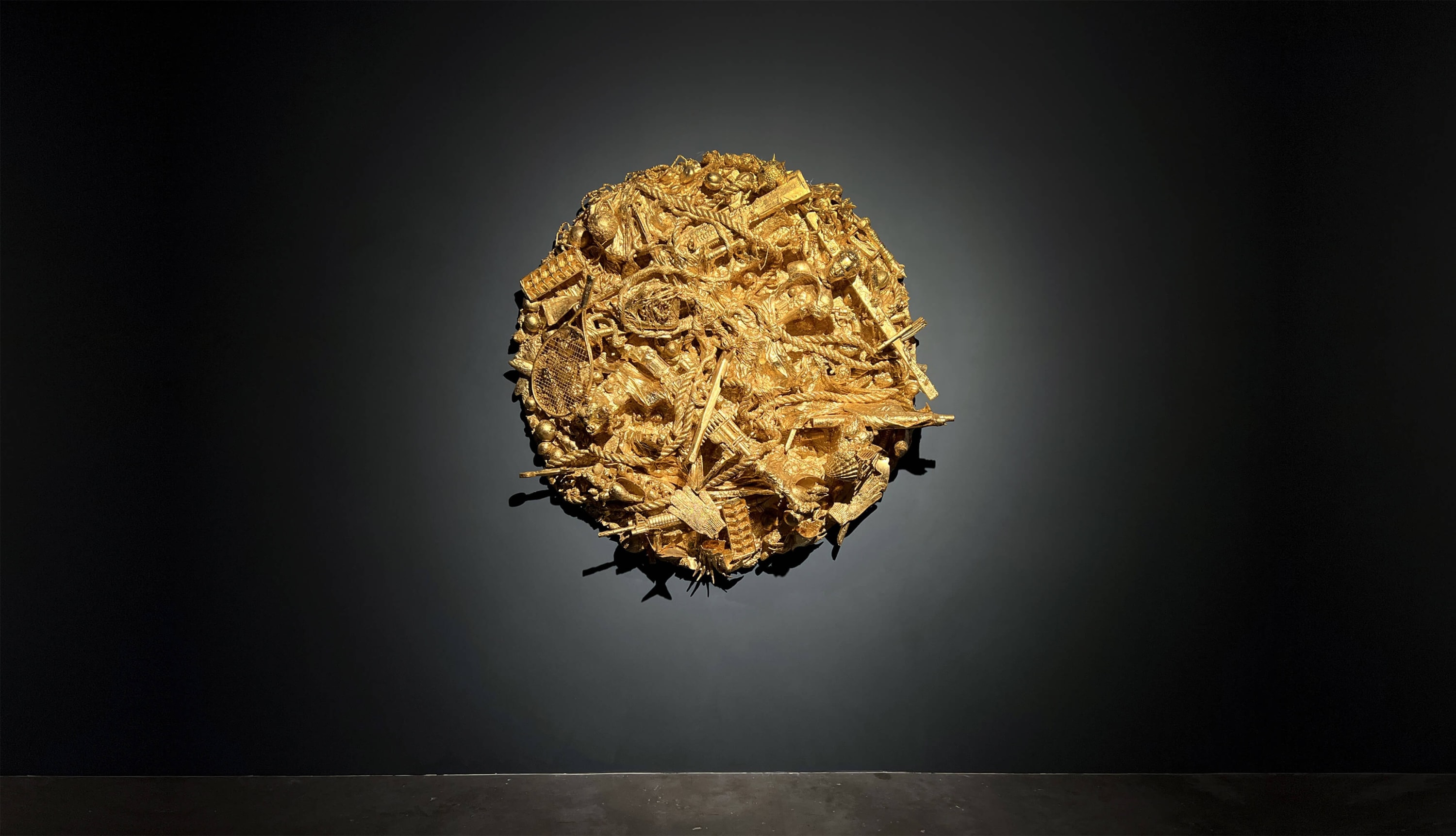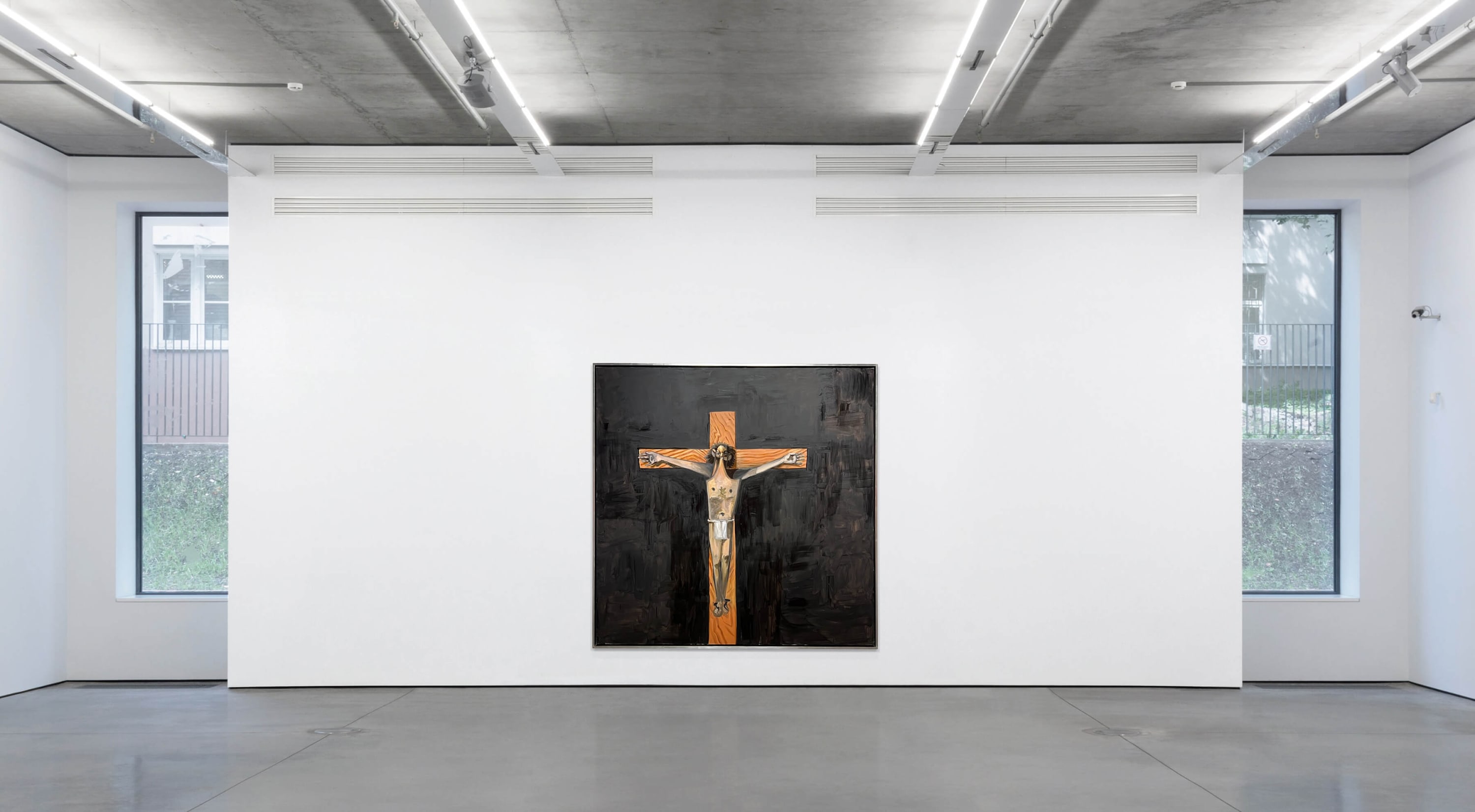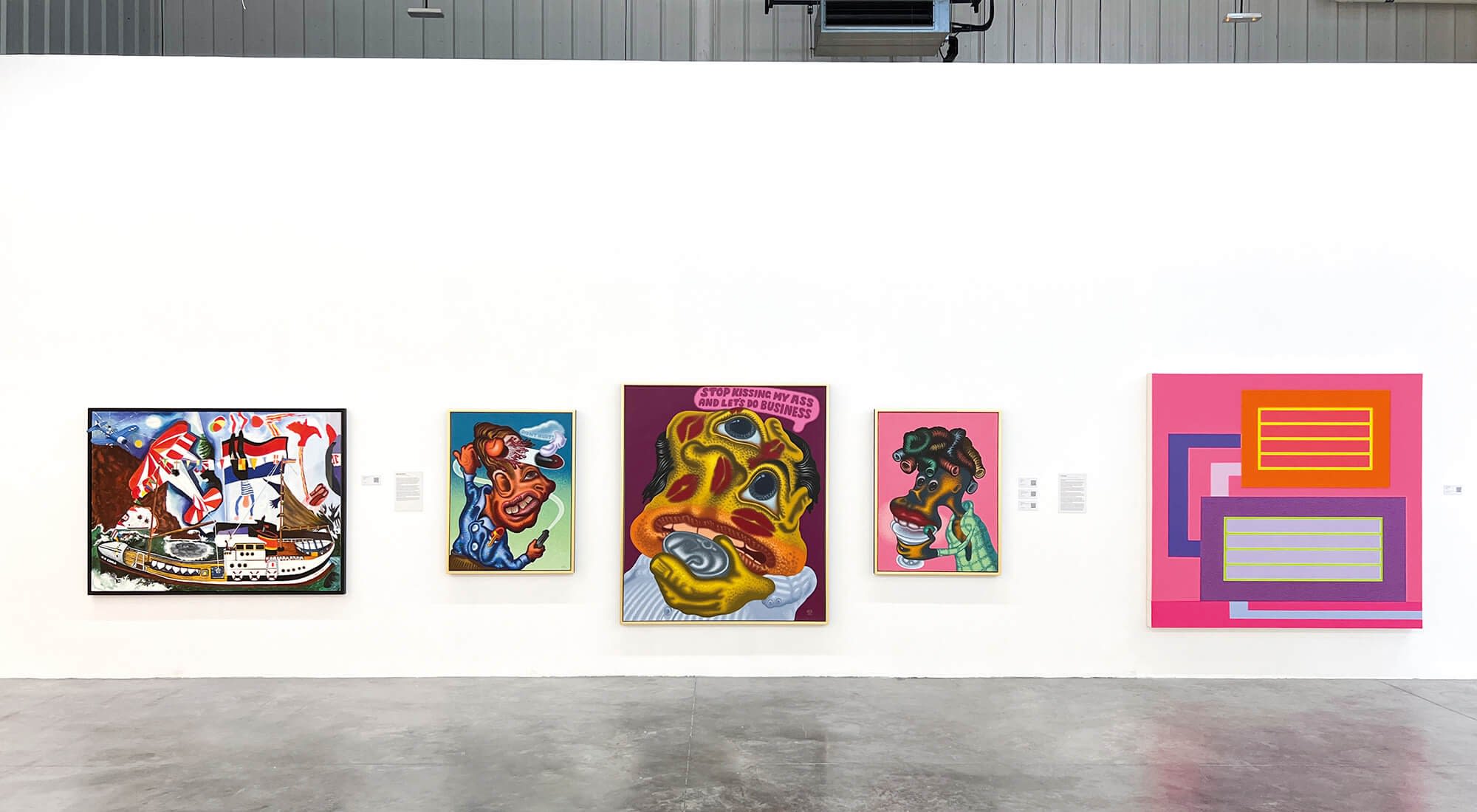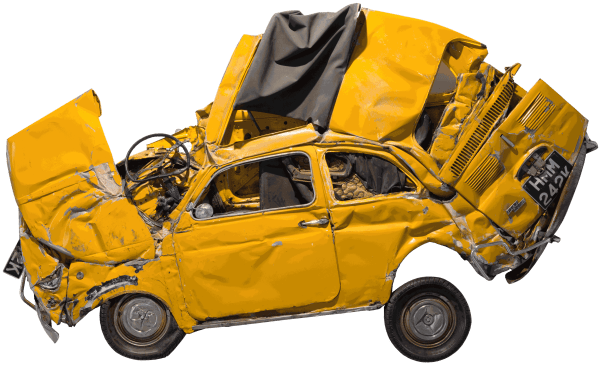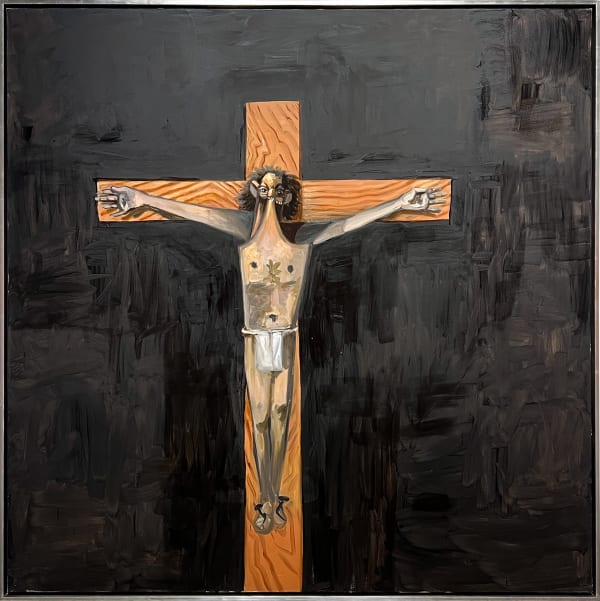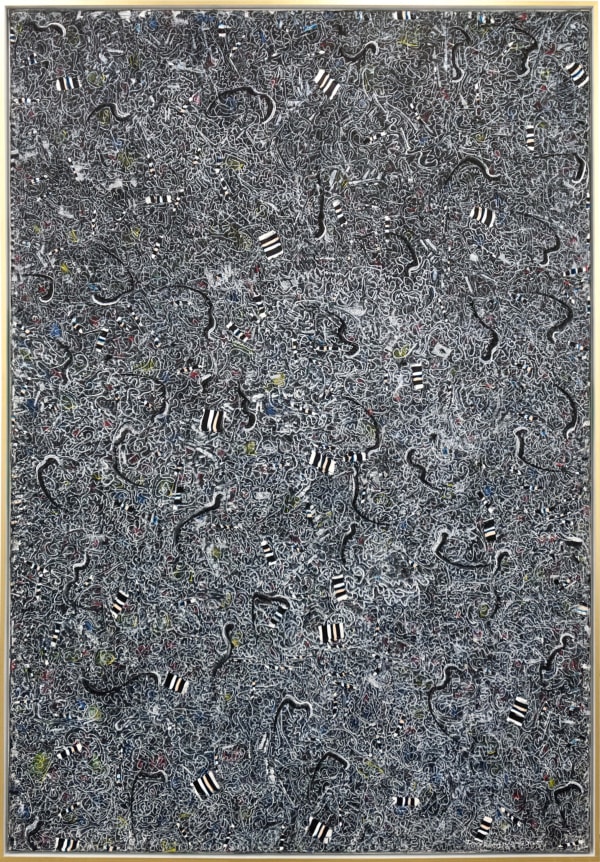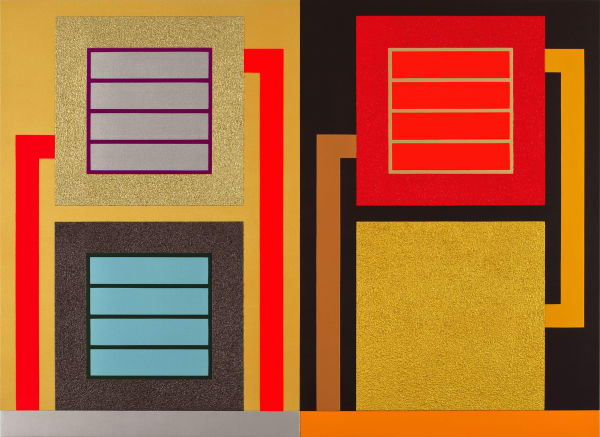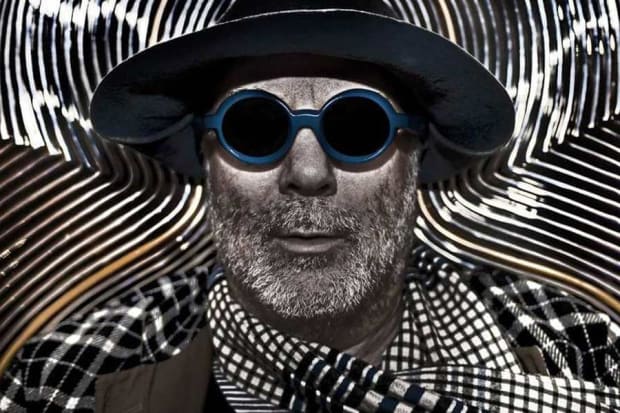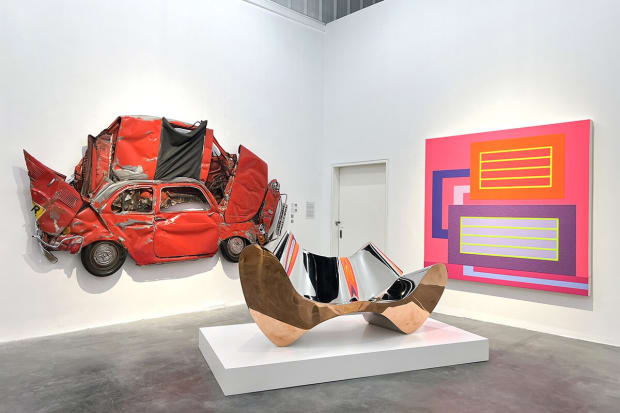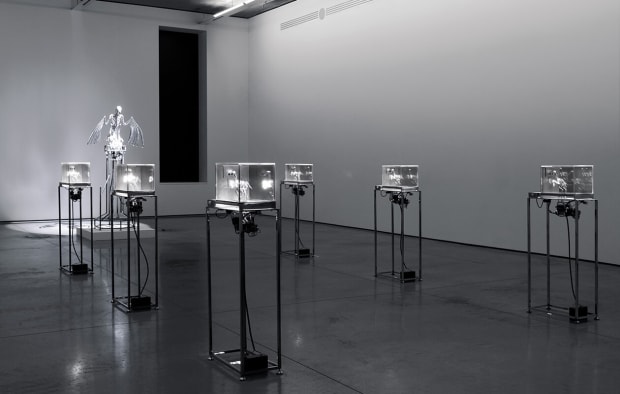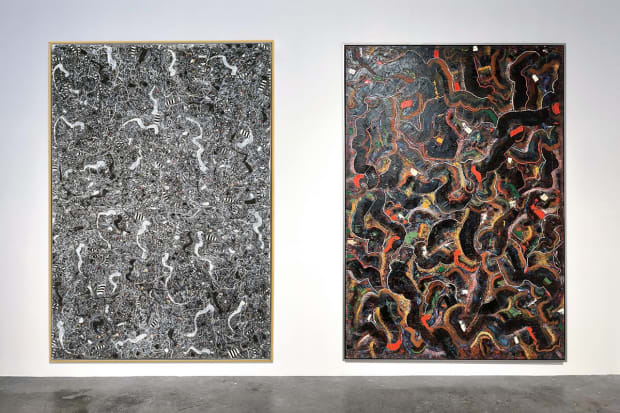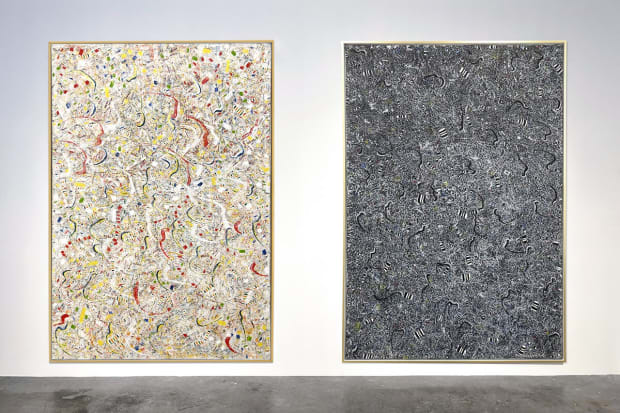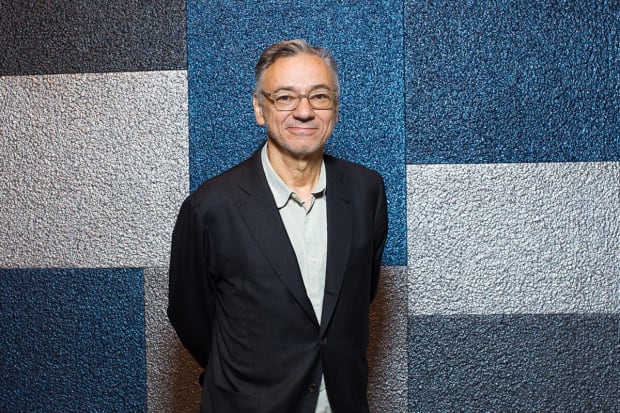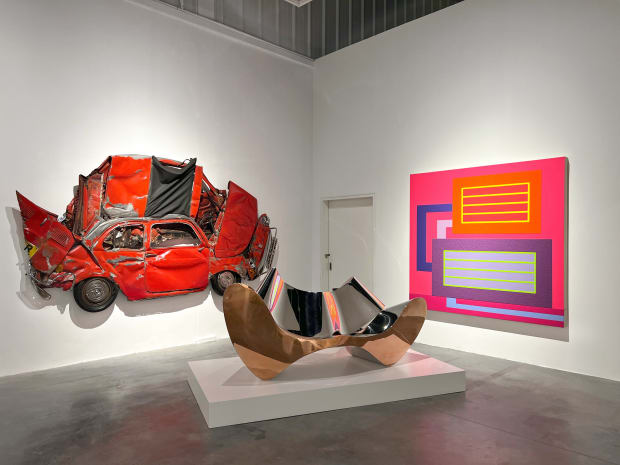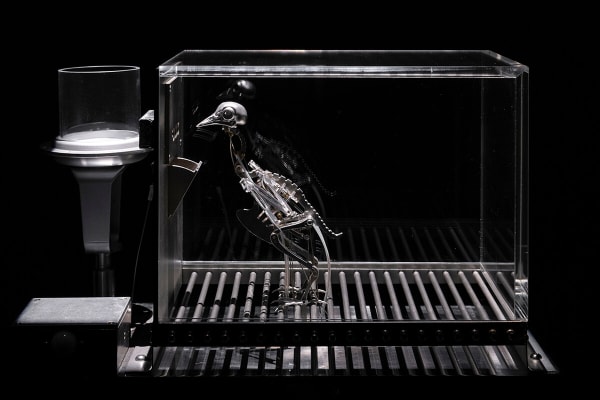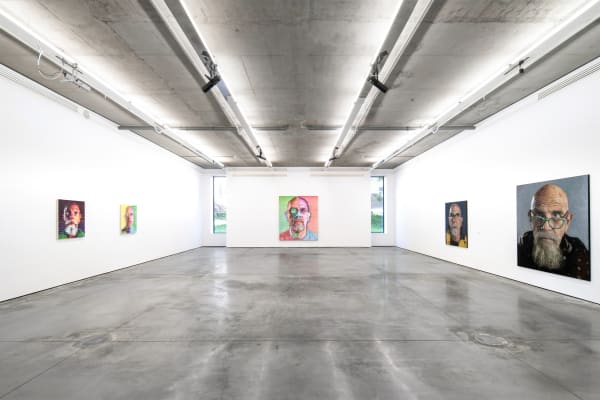Tatintsian Gallery Selected: Group Exhibition, Dubai
-
Tatintsian Selected Project opens alongside two Dubai Landmark Events in Fall 2022 – Alserkal Art Week and Dubai Design Week.
Gallery Showroom will spotlight Selected Works by such contemporary masters as Ron Arad, George Condo, Mat Collishaw, Evgeny Chubarov, Peter Halley, John Miller And Jenny Holzer.
Download press release | Email
Email
-
Exhibited Works
-
 Ron AradPressed Flower (Red), 2013Steel, glass, leather, plastic and vinyl.200 x 370 x 20 cm
Ron AradPressed Flower (Red), 2013Steel, glass, leather, plastic and vinyl.200 x 370 x 20 cm -
 Ron AradPressed Flower (Yellow), 2013Steel, glass, leather, plastic and vinyl
Ron AradPressed Flower (Yellow), 2013Steel, glass, leather, plastic and vinyl
250 × 370 × 20 cm -

-

-
-
-
-
The sculpture “D-Sofa” (1993) is an iconic work by Ron Arad and one of his key design objects This work embodies Ron Arad’s inherent architectural style of undulating flowing forms, his inventive design that combines industrial materials into a language of volume and sinuous lines. The sofa is made of steel, a metal that appeals to the artist for its surface, strength, malleability, and spirit of minimalism.
“If I could steal any piece from my exhibition (at the MoMA, NY), it would be this D-Sofa,” says the artist, admitting the object as one of his favorites.
Table Tennis has been a constant source of entertainment and inspiration for Ron Arad, both as a design object and as a recreational activity. The concave surface of “New Ping Pong” (2008–2015) is brilliant example of Arad’s design. Polished to a high gloss, the curved table made of stainless-steel, was designed to slow down the pace of the game and make rallies last longer. In this way, a game that normally runs at high speeds is transformed into a relaxed pastime.
“I could not help but wonder what else I could have done do with this magical material. So I thought about doing something that would allow us to enjoy the material in a completely new and different way.” – Ron Arad
Among the most honored Arad’s architectural projects are interior design for the Opera and Performing Art Center in Tel Aviv, a flagship store of fashion designer Yohji Yamamoto in Tokyo and the Design Museum Holon in Israel. Artist’s public projects include: ‘Big Blue’ in Canary Wharf (London), ‘Evergreen!’ (Tokyo), ‘Kesher’ (Tel Aviv), and ‘Vortext’ (Seoul). In 2016, a mobile 16-meter ‘Spyre’ sculpture graced the entrance to the Royal Academy of Arts in London. In 2013, Ron Arad was made a Royal Academician of the Royal Academy of Arts.
Artist’s work graces private and public collections all over the globe, including the Metropolitan Museum of Art (New York, USA), the Victoria and Albert Museum (London, UK), Design Museum (London, UK), Stedelijk Museum of Modern Art (Amsterdam, Netherlands), Musée National d’Art Moderne/ Centre Georges Pompidou (Paris, France), Museum of Modern Art (New York, USA), Powerhouse (Sydney, Australia), Design Museum (Osaka, Japan).
-
-
-
A striking example of Condo’s dramatic intensity is the painting Dismas, in which he reinterprets the image of the penitent thief from the biblical narrative. Rather than portraying the classical figure as a bearer of the story, Condo transforms it into an expressive symbol of his own creative language and a nuanced exploration of artistic practices.
The work seamlessly combines techniques and methods inspired by Francisco Goya, Marc Chagall, and Francis Bacon, whose approaches Condo adapts and radically reimagines within his unique style and visual aesthetics.
Works by George Condo are held in major public and private collections around the world, including the Museum of Modern Art (MoMA), the Whitney Museum of American Art, and the Solomon R. Guggenheim Museum in New York, as well as Tate Modern in London.
-
-
-
Illusion serves as a central theme in Collishaw’s practice. By destabilizing familiar imagery, he challenges conventional ways of seeing and questions the trust we place in images. His fascination with the Victorian era stems from its pioneering developments in visual technology. Drawing on early photographic techniques, zoetropes, and spectral projections, Collishaw uses both historical and cutting-edge tools to reanimate pre-cinematic effects in a contemporary context.
Beneath the visual allure of his works lies a deeper inquiry into how we process and are shaped by images. Collishaw investigates themes of behavioral conditioning, manipulation, and the construction of reality in the digital age. His art invites viewers to reflect on the intersection of technology, psychology, and social experience.
Mat Collishaw’s works have been exhibited widely and are included in major public and private collections around the world, including Tate (London, UK), Somerset House (London, UK), Galleria Borghese (Rome, Italy), and the Victoria and Albert Museum (London, UK), among others.
-
-
-
Over a career spanning more than four decades, Chubarov lived and worked in Berlin, New York, and Moscow. During this time, he developed what he termed "Pure Abstraction"—an intellectual and emotional approach to abstract painting. In this practice, the line was not simply a formal element but a bearer of psychological and metaphysical meaning.
Improvisation played a central role in his work. Drawing on a musical understanding of abstraction, Chubarov conceived his paintings as symphonic in nature. Devoid of a traditional focal point, his compositions are dynamic and all-over, defying classical balance and rejecting compositional hierarchy. This radical approach, which he referred to as "non-relational art," disrupted conventional notions of harmony, color relationships, and form.
Evgeny Chubarov’s works are held in established private and museum collections, including the Pushkin State Museum (Moscow), the Tretyakov Gallery, the Moscow Museum of Modern Art, Rutgers University Museum (USA), and the Osthaus Museum in Hagen (Germany). In the 2000s, he was awarded a grant from the Pollock-Krasner Foundation.
His legacy, comprising hundreds of paintings and works on paper alongside a substantial body of sculpture, remains a significant contribution to the development of abstract art and visual culture in the late 20th and early 21st centuries.
-
-
-
A key aspect of his practice is the juxtaposition of minimalist geometry with commercial materials such as fluorescent Day-Glo paints and Roll-a-Tex, a textured surface treatment commonly found in suburban interiors. This deliberate clash of formal rigor and synthetic finish underscores the tensions between modernist ideals and the realities of consumer culture.
Halley’s work offers a sustained critique of technological rationalism and the spatial logic of contemporary life. His paintings, drawings, and Kodaliths raise broader questions about how abstraction can both reflect and interrogate the mediated structures that shape human experience.
Recognized as a key voice in postmodern abstraction, Halley has profoundly influenced generations of artists and thinkers through both his visual practice and his critical writing.
His works have been exhibited widely and are held in major public collections, including the Tate Modern (London, UK), the Art Institute of Chicago (USA), the Museum of Modern Art (New York, USA), and the Dallas Museum of Art (Dallas, USA), among many others. -
-
-
Over the course of 30 years, Miller has produced an eclectic and profoundly diverse body of work that addressed language, valuation, social hierarchy and abjection. Through his sculptures, photographs, paintings and installations, Miller continuously explores notions of identity, economics, and social class.
Miller is best known for a series of relief assemblages formed from found objects and synthetic low-end merchandise coated with a layer of paint that he began to make in the mid-1980s. In 2008, he began gilding the reliefs using imitation gold. The metallic shimmer of gold-plated objects evokes an unconscious attraction, drawing viewer's eyes to the shiny surfaces. Only on a closer look, these gold-painted details turn out to be the low-cost household items. Taken together, these objects are devoid of practical application and portray a mock reflection of average life.
'All that glitters is not gold' – the contrast between the illusion of luxury and the disappointment of the sudden loss of value of the object reflects Miller's position on the validity of art in consumer culture.
-
-

-
Text is her primary medium, used as a vehicle for social commentary. Her themes include feminism, oppression and inequality, consumerism, poverty, and corruption. Holzer’s texts often take the form of succinct aphorisms, slogans, or poetic fragments that provoke reflection and raise awareness.
Having begun with simple posters and handbills on the streets of New York, by the mid-1990s Holzer had turned to light projections on building façades—realized in more than 50 countries and transforming urban space into a platform for public discourse.
One of Holzer’s key projects is the Top Secret series – the paintings based on declassified documents from the U.S. National Security Archive relating to military operations in Iraq and Afghanistan. At first glance, these works resemble abstract paintings, referencing the aesthetics of Kazimir Malevich, Ad Reinhardt, or the meditative surfaces of Mark Rothko: soft pastel tones and geometric compositions create a sense of calm and stillness. However, on closer inspection, it becomes clear that beneath these color fields are reproductions of pages containing redacted text. Most of the content has been blacked out or obscured by censorship, and the bright blocks of color function as visualizations of erasure. What remains are gaps and traces—fragments of meaning overlaid on silented testimony.
By turning archival material into near-abstraction, Holzer evokes the loss of truth—once recorded in language but now inaccessible. In this tension between aesthetic surface and documentary content, she exposes the mechanisms of concealment and the distortion of reality in an era of political opacity.
Jenny Holzer’s work is held in major museums and public collections around the world, including the Louvre Abu Dhabi, the Peggy Guggenheim Collection in Venice, and the Guggenheim Museum Bilbao, among many others.
-
Artist
-
-
Explore more
-

Mat Collishaw. The Machine Zone
Personal Exhibition, Dubai 27 September - 30 December 2022Mat Collishaw is one of the most significant and compelling artists in contemporary British art. With an early foundation at Goldsmiths College, Collishaw formed part of the legendary movement of... -

Chuck Close. Infinite
Personal Exhibition 18 June - 27 November 2021A legendary portrait painter and master of photorealism, Chuck Close is one of the most influential artists of his generation, renowned for his meticulous detail and innovative technique, which deeply... -

Naturally Naked
Group Exhibition 15 August - 28 December 2019
-
